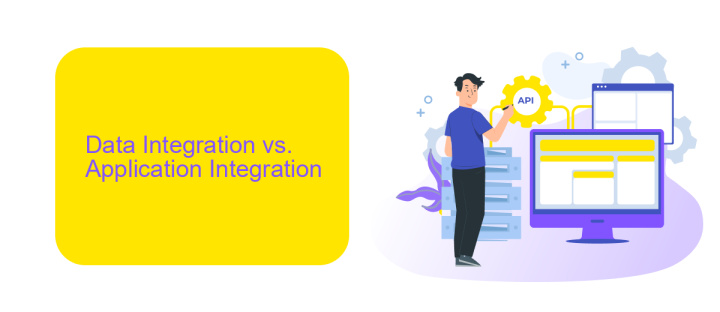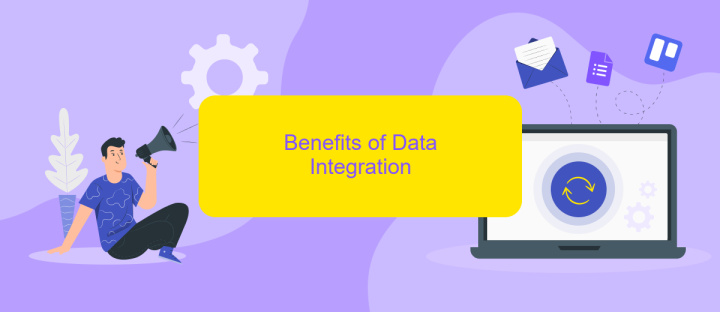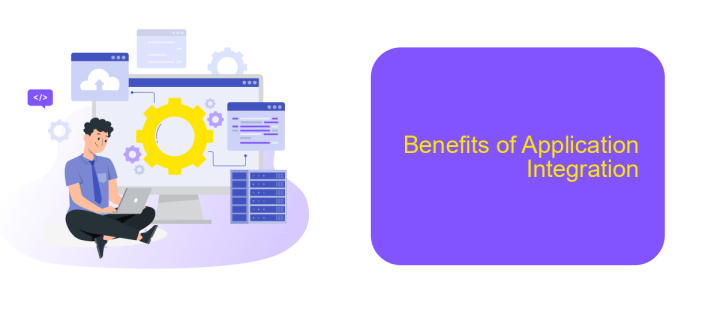Difference Between Data Integration and Application Integration
In today's interconnected digital landscape, businesses often face the challenge of integrating diverse systems and data sources. Understanding the difference between data integration and application integration is crucial for effective IT strategy. While both aim to streamline processes and enhance efficiency, they serve distinct purposes and involve different methodologies. This article explores these differences to help organizations make informed decisions.
Introduction
In today's rapidly evolving digital landscape, the concepts of data integration and application integration are often discussed but frequently misunderstood. These two integration strategies are crucial for businesses aiming to streamline operations, improve data accuracy, and enhance overall efficiency. While they may seem similar, they serve distinct purposes and involve different processes.
- Data Integration: Focuses on combining data from different sources to provide a unified view.
- Application Integration: Involves connecting different software applications to work together seamlessly.
Understanding the difference between data integration and application integration is vital for making informed decisions about your business's IT strategy. Tools like ApiX-Drive can simplify both types of integrations, offering user-friendly solutions to connect various data sources and applications effortlessly. Whether you're looking to consolidate your data or enable your applications to communicate more effectively, knowing which type of integration to implement is the first step towards achieving your goals.
Data Integration vs. Application Integration

Data Integration focuses on combining data from different sources into a unified view, enabling comprehensive analysis and reporting. This process often involves extracting, transforming, and loading (ETL) data into a data warehouse or data lake. The main goal is to provide a consolidated dataset that supports business intelligence, analytics, and decision-making processes. Data Integration is crucial for organizations that need to analyze large volumes of data from various sources to gain insights and drive strategic actions.
In contrast, Application Integration involves connecting different software applications to work together seamlessly. This is achieved through middleware, APIs, and other tools that enable real-time data exchange and process automation across systems. Application Integration ensures that business processes are streamlined and that data flows smoothly between applications, enhancing operational efficiency. Services like ApiX-Drive simplify this by providing an intuitive platform to set up integrations without requiring extensive coding, allowing businesses to automate workflows and improve productivity effortlessly.
Benefits of Data Integration

Data integration is a critical process for organizations looking to consolidate information from various sources into a single, unified view. This process offers several key benefits that can significantly enhance business operations and decision-making capabilities.
- Improved Data Quality: By integrating data from multiple sources, inconsistencies and duplicates are identified and resolved, leading to cleaner and more reliable data.
- Enhanced Decision-Making: With a comprehensive view of data, businesses can make more informed decisions, leveraging insights that span across different departments and systems.
- Increased Efficiency: Automating data integration reduces the time and effort required to manually consolidate data, allowing employees to focus on more strategic tasks.
- Scalability: As businesses grow, data integration solutions like ApiX-Drive can easily scale to accommodate increasing volumes of data from various sources.
- Cost Savings: Streamlining data management processes can lead to significant cost reductions by minimizing the need for multiple data storage and handling solutions.
Implementing robust data integration practices can transform how businesses operate, providing a more holistic view of operations and enabling more strategic use of information. Tools like ApiX-Drive facilitate seamless integration, ensuring that data from disparate sources can be easily and efficiently consolidated.
Benefits of Application Integration

Application integration offers a multitude of benefits that significantly enhance business operations. By seamlessly connecting different software applications, organizations can streamline workflows and improve efficiency. This interconnectedness allows for real-time data exchange, reducing the need for manual data entry and minimizing errors.
One of the primary advantages of application integration is the ability to foster better communication between departments. When applications are integrated, information flows smoothly across various systems, enabling teams to collaborate more effectively. This leads to improved decision-making and faster response times to market changes.
- Enhanced operational efficiency
- Real-time data synchronization
- Improved data accuracy
- Better inter-departmental communication
- Scalability and flexibility
Services like ApiX-Drive make setting up these integrations straightforward and efficient. ApiX-Drive allows businesses to connect multiple applications without the need for extensive coding knowledge. This user-friendly platform ensures that companies can quickly adapt to new tools and technologies, maintaining a competitive edge in the market.
- Automate the work of an online store or landing
- Empower through integration
- Don't spend money on programmers and integrators
- Save time by automating routine tasks
Conclusion
Data integration and application integration serve distinct yet complementary roles in the digital landscape. While data integration focuses on consolidating data from various sources into a unified view, application integration emphasizes the seamless interaction between different software applications to enable streamlined business processes. Understanding the nuances between these two types of integration is crucial for organizations aiming to optimize their IT infrastructure and enhance operational efficiency.
Choosing the right tools and services for integration can significantly impact the success of these initiatives. For instance, platforms like ApiX-Drive offer robust solutions for both data and application integration, ensuring that disparate systems can communicate effectively and data can be synchronized in real-time. By leveraging such services, businesses can achieve greater agility, reduce manual workloads, and foster a more connected and efficient digital ecosystem.
FAQ
What is the main difference between data integration and application integration?
Why is data integration important?
Can data integration and application integration be used together?
What are common challenges in application integration?
How can automation services help with integration?
Do you want to achieve your goals in business, career and life faster and better? Do it with ApiX-Drive – a tool that will remove a significant part of the routine from workflows and free up additional time to achieve your goals. Test the capabilities of Apix-Drive for free – see for yourself the effectiveness of the tool.


